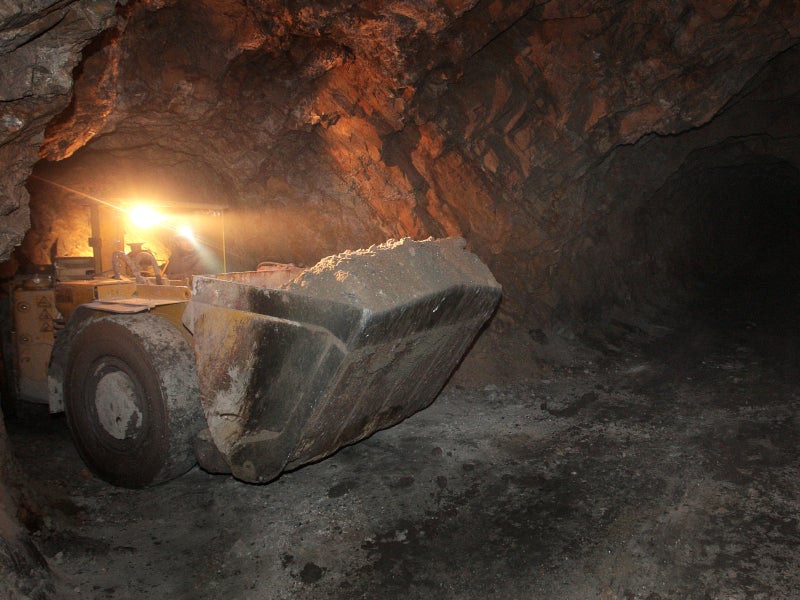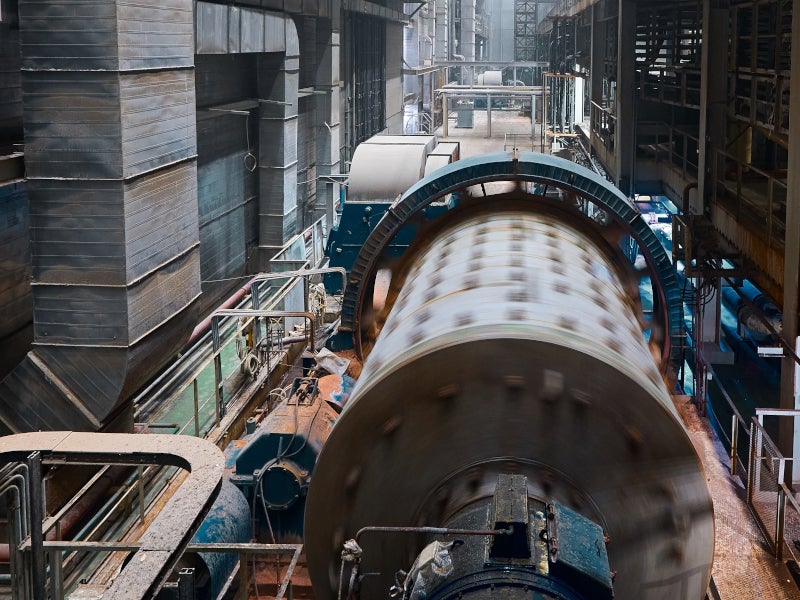The Marmato gold mine project in Colombia’s Marmato district is an operating underground mine. A pre-feasibility study (PFS) was completed in June 2022 to extend the mining operations to the lower mine.
Colombian company Aris Mining is the owner of the project. The upper mine has been in operation since 1993 and produces up to 26.8 thousand ounces (koz) of gold a year. The lower mine will be developed as an extension to the upper mine.
The current life expectancy of the upper mine is 19.5 years, while the lower mine is projected to operate for approximately 18 years.
Construction at the lower mine began in September 2023 while production is scheduled to commence in September 2024, with full production anticipated by 2026. The development cost of the lower mine is estimated at $280m.
Marmato gold project location
The Marmato mine is located in the Marmato gold district in the mountainous Caldas region. The mine lies 80km south of Medellin and 200km north-west of Bogota.
The mining development encompasses the Zona Baja and Echandia mining titles.
Geology and mineralisation of the Marmato site
The Marmato deposit is part of the east-west cordillera of the Colombian Andes, housed within the Marmato Porphyry suite, which is noted for its andesitic to dacitic intrusions, with characteristic mineral features.
The upper mine features epithermal mineralisation with an array of sulfide-rich veins while the lower mine’s mineralisation is more mesothermal with fine veinlets and porphyry-hosted minerals.
Gold and silver reserves at Marmato
The proven and probable ore reserves at the Marmato mine are estimated to be 31.2 million tonnes (mt), grading 3.16g/t of gold and 6.1g/t of silver with contained gold of approximately 3,178koz and silver of 6,138koz as of June 2022.
Mining method
The upper mine is currently mined using conventional cut-and-fill stoping methods. The narrow vein mineralisation style changes to a large porphyry mineralised zone at the base of the upper mine, where the long hole stoping and drift and fill methods are used.
The upper mine currently has six production levels, with the highest level at Level 16, and the lowest at Level 21, and one level in development. The mining level accesses proceed horizontally from the main portal at the surface to horizontal cross-cuts.
Each level is 50m apart vertically, except Level 20, which is 60m from Level 19. Level 18 serves as the main haulage level and the primary access for the mine.
Mineralisation at the lower mine occurs below the upper mine and approximately 800m to 1,400m below the surface level and will employ underground long-hole stoping methods. The lower mine deposit will be mined in blocks from bottom to top with the use of paste backfill for support.
The stopes will be 20m wide and 25m high with varying lengths, based on the mineral grade. Each stope will have a 4.5m x 4.5m access located at the bottom of the stope.
Ore processing at Marmato upper mine
The run-of-mine (ROM) ore is crushed in a primary jaw crusher followed by secondary and tertiary cone crushing.
The crushed ore is conveyed to a ball mill operating in an open circuit, which discharges to a gravity concentrator to recover coarse gold. Gravity tailings are pumped to two hydrocyclones.
The cyclone overflow is introduced to the flotation circuit, where it is mixed with flotation reagents and undergoes one stage of rougher flotation followed by two stages of scavenger flotation. The rougher and scavenger cleaner flotation concentrates are combined with the gravity concentrate and thickened for regrinding in a ball mill operating in a closed circuit with cyclones.
The reground flotation and gravity concentrates are agitated and undergo cyanide leaching in a two-stage conventional cyanidation circuit. The circuit discharge feeds a thickener, while the thickener overflow feeds the Merrill Crowe gold recovery circuit.
The thickener underflow undergoes a second stage of cyanide leaching and advances to the counter-current decantation circuit to wash the pregnant leach solution from the leached solids. The leached slurry is combined with the flotation circuit tailings fed to the cyanide detoxification circuit.
The pregnant leach solution is clarified and de-aerated in a vacuum tower and then zinc dust is added, precipitating the gold and silver, which are recovered in a filter press.
Ore processing at Marmato lower mine
The ROM ore will initially be crushed using a primary jaw crusher followed by a secondary cone crusher.
Crushed ore from the stockpile will be transferred to the semi-autogenous grinding (SAG) mill via a conveyor. The ball mill’s trommel screen undersize slurry will discharge into the cyclone feed hopper and will be pumped to the cyclone cluster.
A portion of the cyclone underflow will be directed to the gravity circuit scalping screen. The gravity concentrate will be leached in an intensive cyanidation leach unit (ICU) to recover gold. The pregnant solution from the ICU will be sent to the gold room for electrowinning and smelting.
The discharge from the leach tanks will flow to the first carbon-in-pulp (CIP) tank, Carbon will be introduced to the last CIP tank from the carbon regeneration circuit and circulate counter-current to the slurry flow. The slurry from the final CIP tank will be fed into the cyanide detoxification tanks.
Gold recovery will be achieved by electrowinning solutions from the ICU and elution circuits, with the final product smelted into gold-silver dore.
Site infrastructure
The Marmato mine is accessible via a three-hour drive from Medellin on the Pan-American highway, National Route 25. An 8km partially sealed secondary road connects to the property. The mine can also be reached by a three-hour drive from Pereira and a 2.5-hour drive from Manizales.
The existing upper mine operations currently receive adequate power supply from the Colombian power provider, Central Hidroeléctrica de Caldas (CHEC). CHEC plans to extend power to the lower mine from the Salamina 115kV substation, located 15km away.
Water requirements for the process plant will be met through a combination of underground dewatering, plant recycling, and tailings storage facility reclaim.
The accommodation camp, positioned south of the process plant and north of El Llano, will feature a three-storey modular construction. Initially serving construction personnel, it will subsequently transition to accommodate plant operation staff post-commissioning. The camp can cater for 466 individuals.
Contractors involved
SRK Consulting was responsible for the mineral resource estimation as part of the PFS. Isagen Energia Productiva, Colombia’s second-largest power generation company, is tasked with power supply for the upper mine, while Unidad de Planeacion Minero Energetica, a division of the Colombian Ministry of Mines and Energy, is responsible for transmission.
INDUMIL Industria Militar, the national explosives authority of Colombia, is the explosives supplier for the upper mine.
Plant consumables such as mill balls are supplied by Forjas Santa Barbara, while Distribuidora de Químicos Industriales supplies lime and other reagents. Cyanide procurement is with ORICA Colombia.






